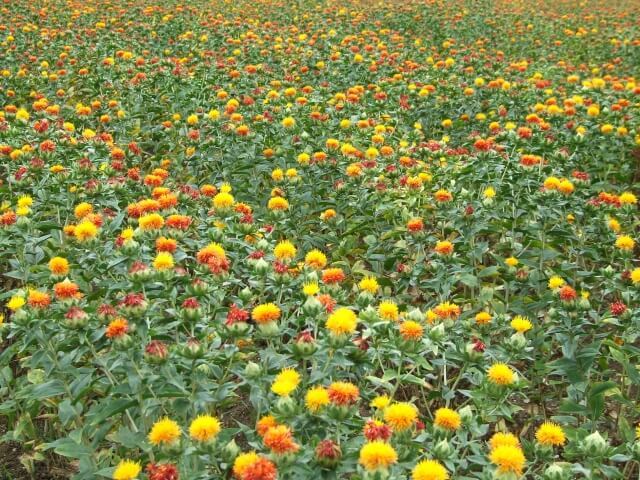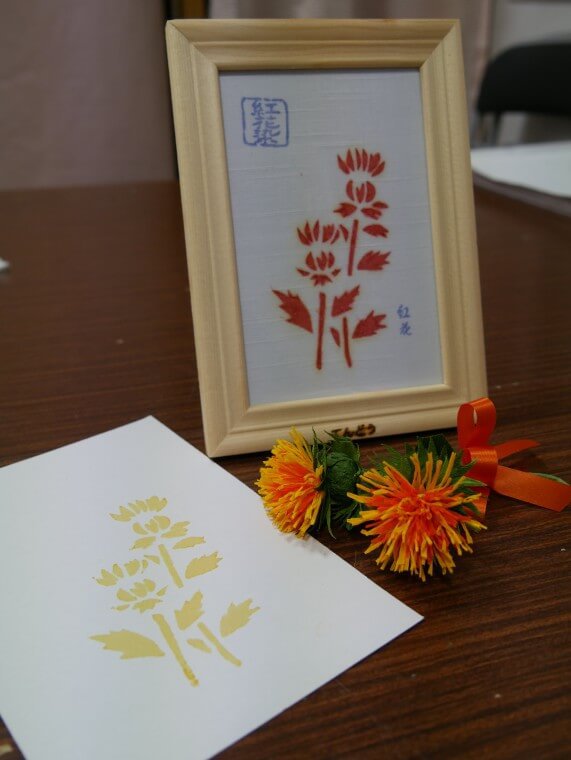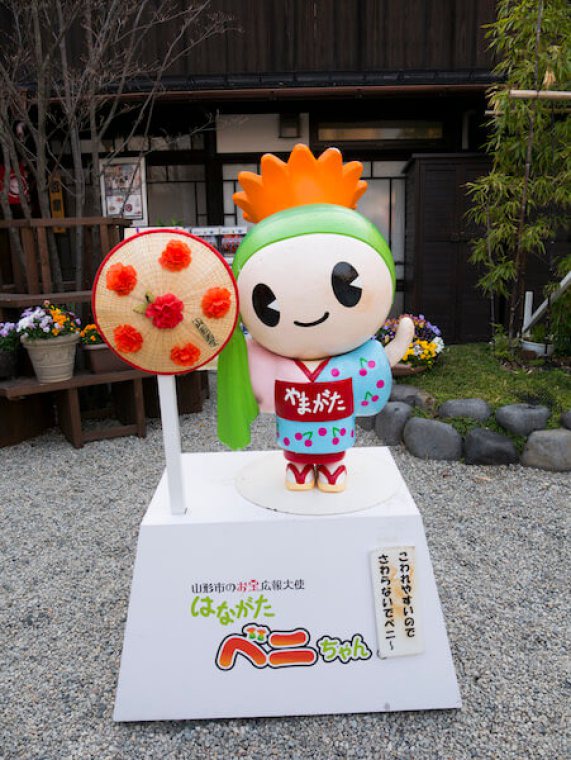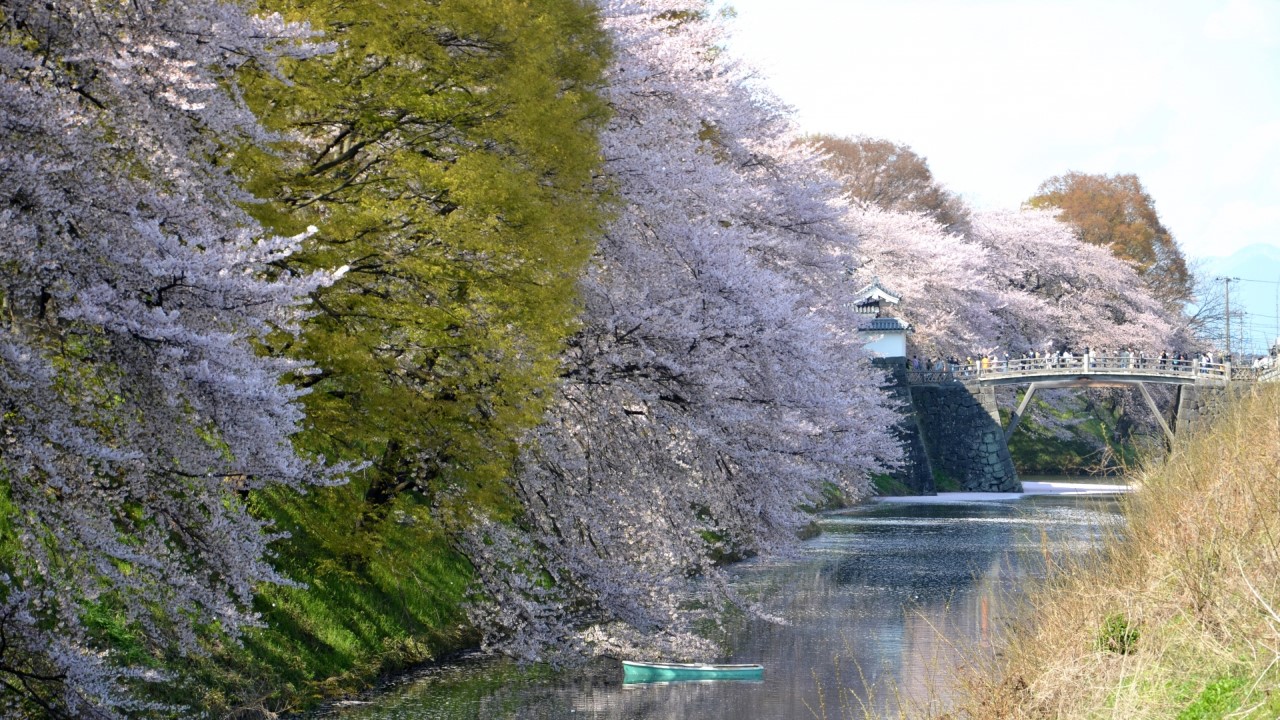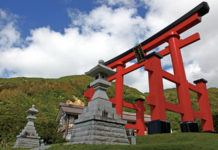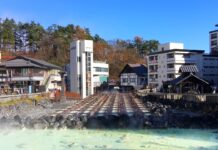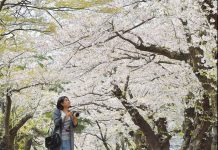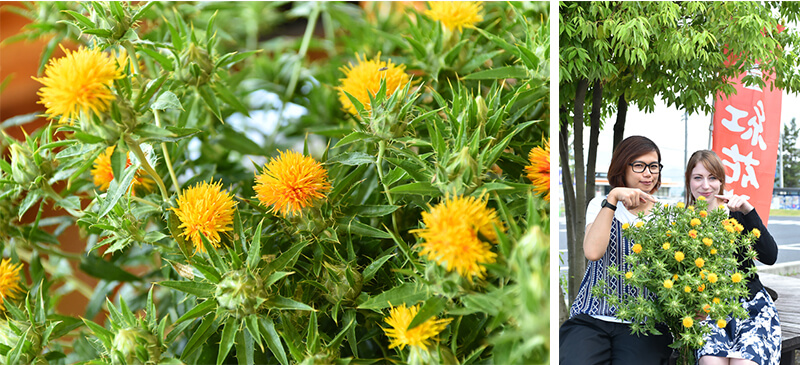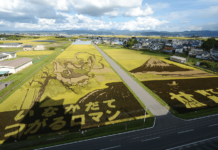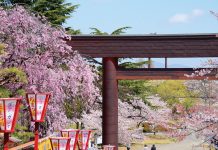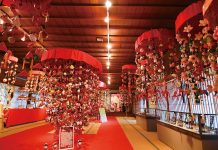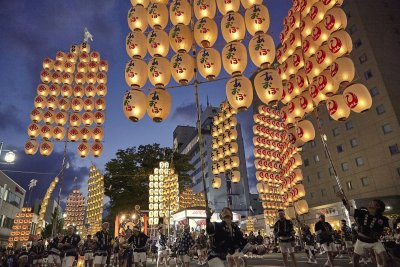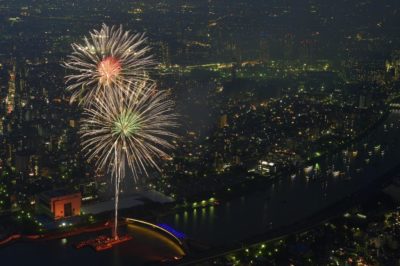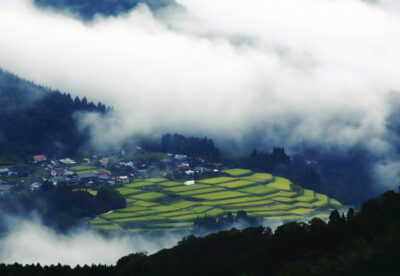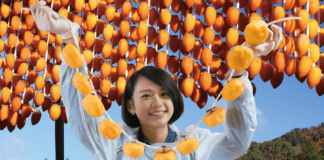The Benibana is grown in Yamagata prefecture in Japan and this little flower can do more than you would think. The inhabitants used the flower’s potential to turn Yamagata prefecture into an important place for luxury goods. Back in the old days the flower was mainly used as dye but now they also turn it into food products. Geisha from Kyoto would paint their lips with Benibana and rich nobles wore kimono dyed with the flower.
With the development of synthetic dyes during the Meiji period the demand for Benibana declined and the industry became much smaller. However, the flower still grows in Yamagata prefecture and the traditional process of turning these flowers into beautiful dye is very interesting.
How to use Benibana
The safflower is an annual (sometimes biennual) plant. They bloom during the summer and are a beautiful shade of yellow and red. After gathering all the flowers, they are locally processed into a pulpy state called Benibana mochi. From this product the treasured dye can be extracted. Benibana actually contains only 1% of red while the other 99% is yellow. To get the red from the Benimochi, you must boil it so that all the yellow parts can be removed. This Benimochi was also easier to transport than a finished product and it gave the buyer more freedom in what color to use.
The Benimochi was transported by land or shipped by river boat down the Mogami River to the port of Sakata near the Japanese sea. From here it was shipped to Kyoto where it was used in Nishijin textile making and the manufacturing of lipstick and cosmetics. The red part of the flower was the most valued color, so it comes to no surprise that with only 1% of it in the flower it was the most expensive. Today, rouge to paint only your lower lip in a flower shape would cost you 500 yen and a full lips cost about 2,000 yen. It was also possible to get a pink color from the Benimochi. In Heian period, a roll cloth of a deeper red dyeing was said to be equal to a residence of noble men. This tells us that clothes dyed with Benibana were priceless in the old days.
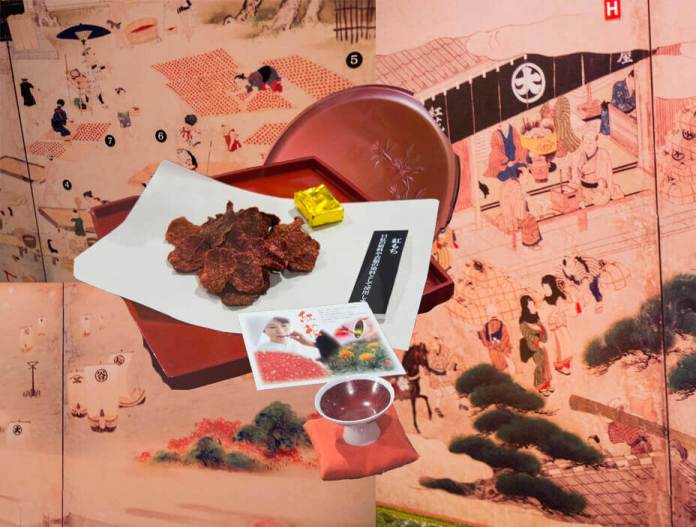
The ship you can see clearest on the picture bears the marking of an old Benibana store that still exists today. This shop is called Marugotokan Beni No Kura and now helps to promote the local products of Yamagata all over Japan. When the Marutani Hasegawa family still runned the shop as a Benibana storehouse it was the commercial hub for Yamagata-city.
Benibana & Hanagasa Matsuri
The Benibana Matsuri takes place in June or July, depending on the harvest of the Benibana. The collected flowers are processed during demonstrations and Benibana cuisine is served to visitors. Beautiful floats are paraded through the city of Yamagata. Try your hand at lip cream making or fabric dyeing with Benibana.
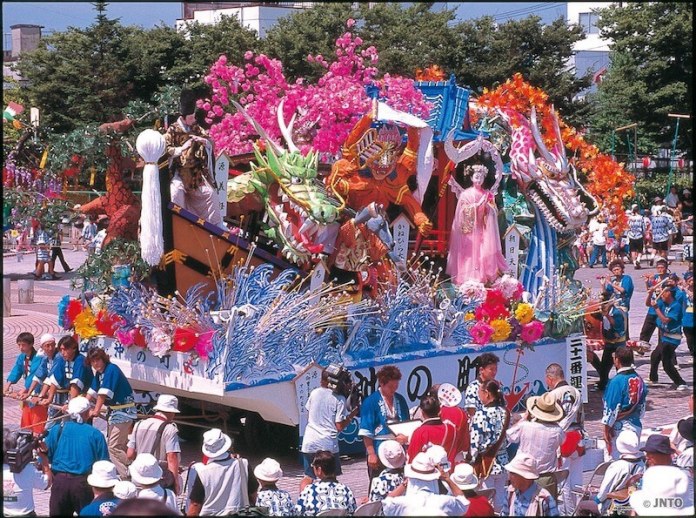
The Yamagata Hanagasa Matsuri attracts more than 1 million spectators over three days in August and is now considered one of the major festivals of the Tohoku area in Japan. Dancers wearing the same outfit per group and holding hanagasa hats adorned with Yamagata Prefecture’s unique safflowers parade through the main street of Yamagata City. A total of 10,000 dancers participate in this dance every year. The parade is led by gorgeously decorated festival floats. The dancers shout ‘Yassho! Makkasho!’, this not only heightens the festival mood but it is also a phrase from a traditional Yamagata folk song.
The dancing has gradually changed over the years. In the past, dancers would mostly perform synchronized dance moves but today dance performances come in a wide variety, like twirling the hanagasa hats and other creative performances.
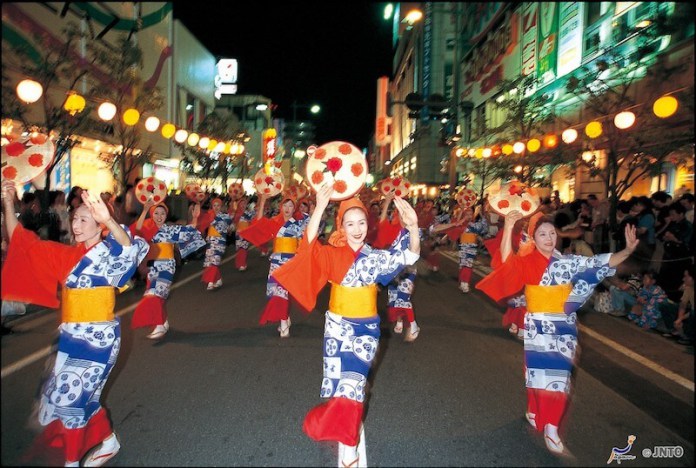
Benibana today
The Benibana flowers serves as the symbol of Yamagata and is an important part of the prefecture’s culture. Students graduating from Elementary and Middle School make paper Benibana and wear them during the graduation ceremony. The dye is still used to make beautiful yellow, pink and red and now the locals even make soumen from the young leaves of the flower. Yamagata truly knows how to use the flower to its full potential, just like their ancestors before them.
Yamagata Benibana Festival
Address: Shimo-Higashiyama 1360, Yamagata (Yamagata Takase Community Center)
Date: Mid July, 2016
Access: A 20-min walk from Takase Station (JR Senzan Line)
 0
0

